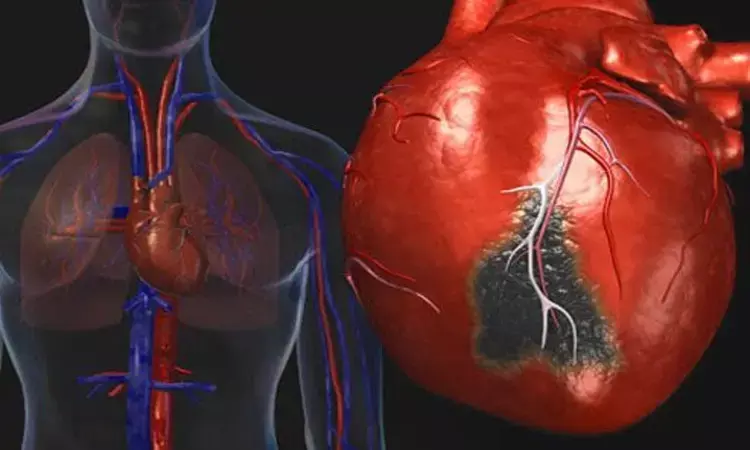- Home
- Medical news & Guidelines
- Anesthesiology
- Cardiology and CTVS
- Critical Care
- Dentistry
- Dermatology
- Diabetes and Endocrinology
- ENT
- Gastroenterology
- Medicine
- Nephrology
- Neurology
- Obstretics-Gynaecology
- Oncology
- Ophthalmology
- Orthopaedics
- Pediatrics-Neonatology
- Psychiatry
- Pulmonology
- Radiology
- Surgery
- Urology
- Laboratory Medicine
- Diet
- Nursing
- Paramedical
- Physiotherapy
- Health news
- Fact Check
- Bone Health Fact Check
- Brain Health Fact Check
- Cancer Related Fact Check
- Child Care Fact Check
- Dental and oral health fact check
- Diabetes and metabolic health fact check
- Diet and Nutrition Fact Check
- Eye and ENT Care Fact Check
- Fitness fact check
- Gut health fact check
- Heart health fact check
- Kidney health fact check
- Medical education fact check
- Men's health fact check
- Respiratory fact check
- Skin and hair care fact check
- Vaccine and Immunization fact check
- Women's health fact check
- AYUSH
- State News
- Andaman and Nicobar Islands
- Andhra Pradesh
- Arunachal Pradesh
- Assam
- Bihar
- Chandigarh
- Chattisgarh
- Dadra and Nagar Haveli
- Daman and Diu
- Delhi
- Goa
- Gujarat
- Haryana
- Himachal Pradesh
- Jammu & Kashmir
- Jharkhand
- Karnataka
- Kerala
- Ladakh
- Lakshadweep
- Madhya Pradesh
- Maharashtra
- Manipur
- Meghalaya
- Mizoram
- Nagaland
- Odisha
- Puducherry
- Punjab
- Rajasthan
- Sikkim
- Tamil Nadu
- Telangana
- Tripura
- Uttar Pradesh
- Uttrakhand
- West Bengal
- Medical Education
- Industry
PCI or CABG more effective for stable patients with high-risk cardiac anatomy

A recent study by University of Alberta cardiologists at the Canadian VIGOUR Centre shows that a particular group of patients with stable ischemic heart disease have better outcomes with percutaneous coronary intervention (also called angioplasty with stent) or coronary artery bypass surgery and medication, versus conservative management with medication alone.
In a study published in the Journal of the American Heart Association, associate professor of medicine and academic interventional cardiologist Kevin Bainey and his team reviewed the patient information of more than 9,000 Albertans with stable ischemic heart disease. While able to function as outpatients, these patients had arteries in the heart that had narrowed and were restricting blood supply. They also had other heart issues--referred to as high-risk cardiac anatomy--including blockages in important locations of the heart's blood vessels, or restriction in the left main artery of the heart.
The data showed that in patients with both stable ischemic heart disease and high-risk cardiac anatomy, coronary revascularization (stents or bypass surgery) led to better health outcomes, including a reduction in the risk of death or heart attack, than a more conservative approach. As well, after one year, the risk of death was 2.7 per cent for patients with revascularization versus 6.8 per cent for those without.
"We strongly believe coronary anatomy is an important prognostic indicator of health outcomes," said Bainey, who is also director of the Adult Cardiac Catheterization and Interventional Cardiology Laboratory and the Interventional Cardiology Fellowship Program. "In a patient who has a higher-risk stress test and is showing symptoms, we think it's valuable to perform a coronary angiogram to get a complete picture, rather than just managing them with medications."
Bainey's study builds on the landmark ISCHEMIA (International Study of Comparative Health Effectiveness with Medical and Invasive Approaches) trial, published in April 2020, which showed that in patients with stable ischemic heart disease, an invasive approach such as stents or bypass surgery did not reduce the risk of death or future coronary events in following years.
While Bainey said he agrees there is a role for conservative management in these patients, high-risk anatomy was not addressed in the ISCHEMIA trial. This prompted him to investigate further, to find out whether Alberta patients with high-risk anatomy might actually benefit from invasive approaches.
"What our results are saying is that medical management is important, but there might be a small group that would benefit from revascularization, and we need to find ways to identify that group of patients," he said.
The results of his study also underline the importance of cardiac anatomy in determining a diagnosis and treatment options--something Bainey hopes more cardiologists will take into consideration when treating patients with stable ischemic cardiac disease.
"The main message I want clinicians to know is that it's important to know the anatomy," Bainey said. "Whether they decide to do a CT scan or send patients for an angiogram, you have to define that anatomy and then make the decision for revascularization or not."
Hina Zahid Joined Medical Dialogue in 2017 with a passion to work as a Reporter. She coordinates with various national and international journals and association and covers all the stories related to Medical guidelines, Medical Journals, rare medical surgeries as well as all the updates in the medical field. Email: editorial@medicaldialogues.in. Contact no. 011-43720751
Dr Kamal Kant Kohli-MBBS, DTCD- a chest specialist with more than 30 years of practice and a flair for writing clinical articles, Dr Kamal Kant Kohli joined Medical Dialogues as a Chief Editor of Medical News. Besides writing articles, as an editor, he proofreads and verifies all the medical content published on Medical Dialogues including those coming from journals, studies,medical conferences,guidelines etc. Email: drkohli@medicaldialogues.in. Contact no. 011-43720751


